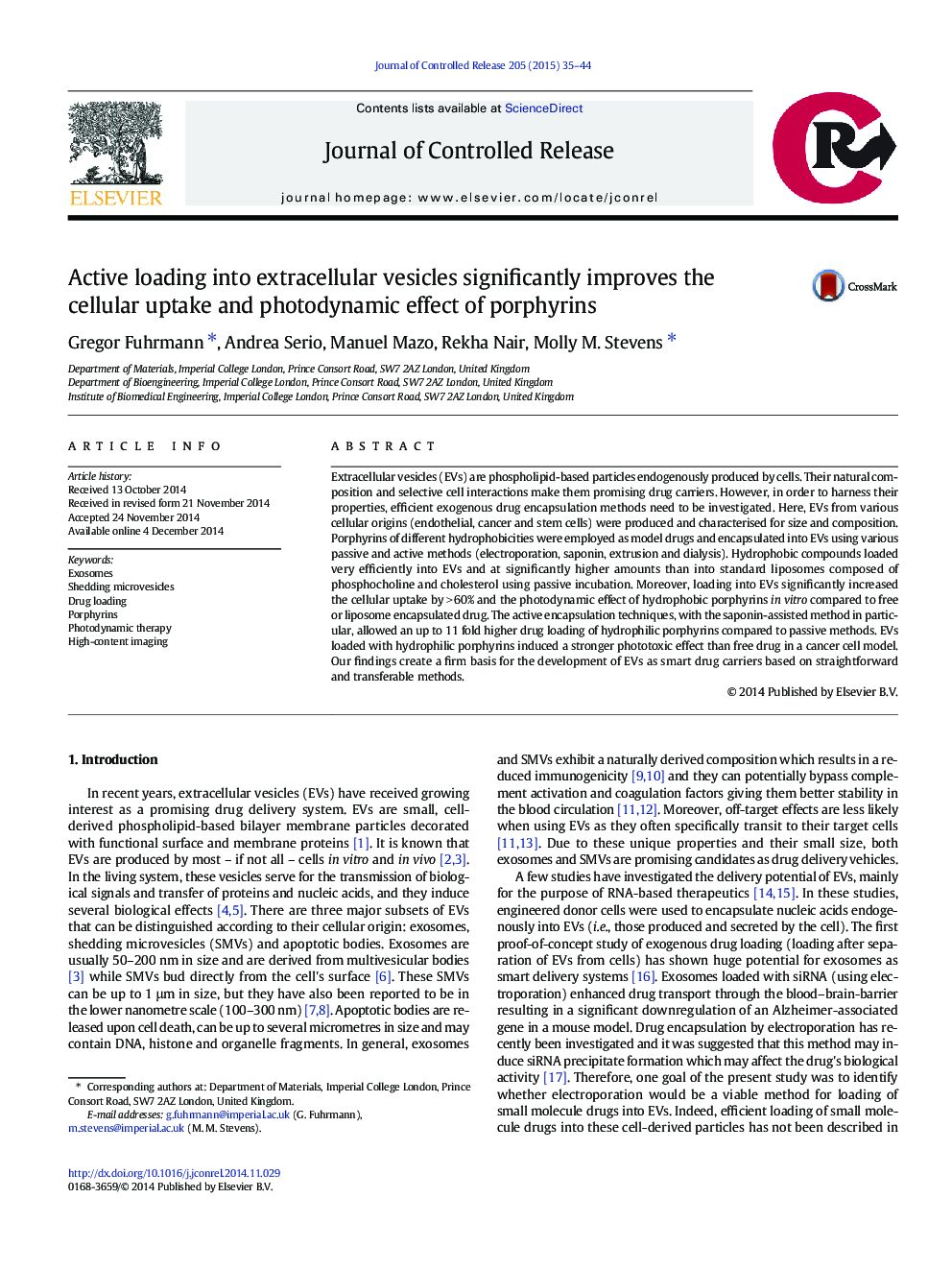| Article ID | Journal | Published Year | Pages | File Type |
|---|---|---|---|---|
| 1423756 | Journal of Controlled Release | 2015 | 10 Pages |
Extracellular vesicles (EVs) are phospholipid-based particles endogenously produced by cells. Their natural composition and selective cell interactions make them promising drug carriers. However, in order to harness their properties, efficient exogenous drug encapsulation methods need to be investigated. Here, EVs from various cellular origins (endothelial, cancer and stem cells) were produced and characterised for size and composition. Porphyrins of different hydrophobicities were employed as model drugs and encapsulated into EVs using various passive and active methods (electroporation, saponin, extrusion and dialysis). Hydrophobic compounds loaded very efficiently into EVs and at significantly higher amounts than into standard liposomes composed of phosphocholine and cholesterol using passive incubation. Moreover, loading into EVs significantly increased the cellular uptake by > 60% and the photodynamic effect of hydrophobic porphyrins in vitro compared to free or liposome encapsulated drug. The active encapsulation techniques, with the saponin-assisted method in particular, allowed an up to 11 fold higher drug loading of hydrophilic porphyrins compared to passive methods. EVs loaded with hydrophilic porphyrins induced a stronger phototoxic effect than free drug in a cancer cell model. Our findings create a firm basis for the development of EVs as smart drug carriers based on straightforward and transferable methods.
Graphical abstractFigure optionsDownload full-size imageDownload high-quality image (130 K)Download as PowerPoint slide
